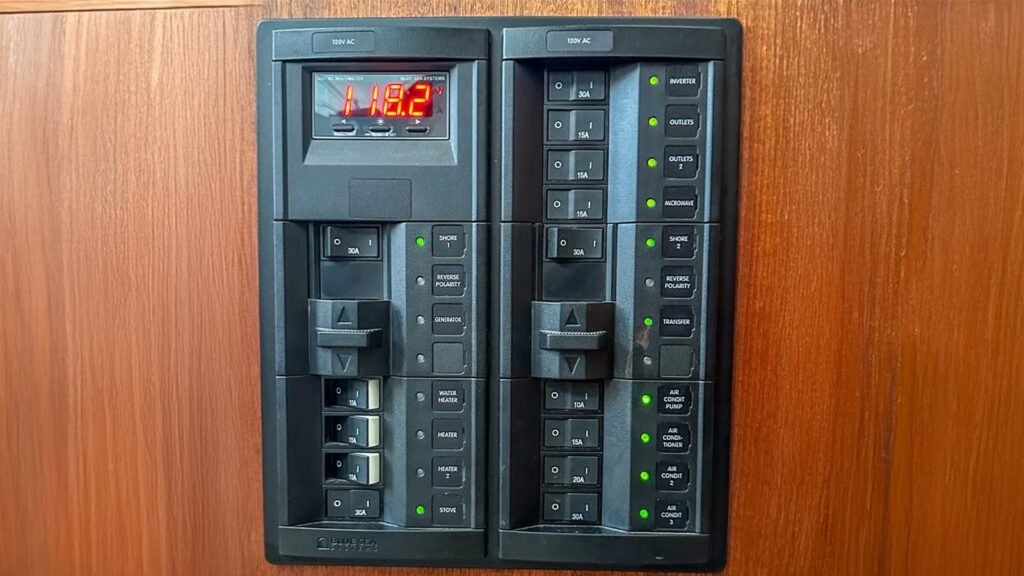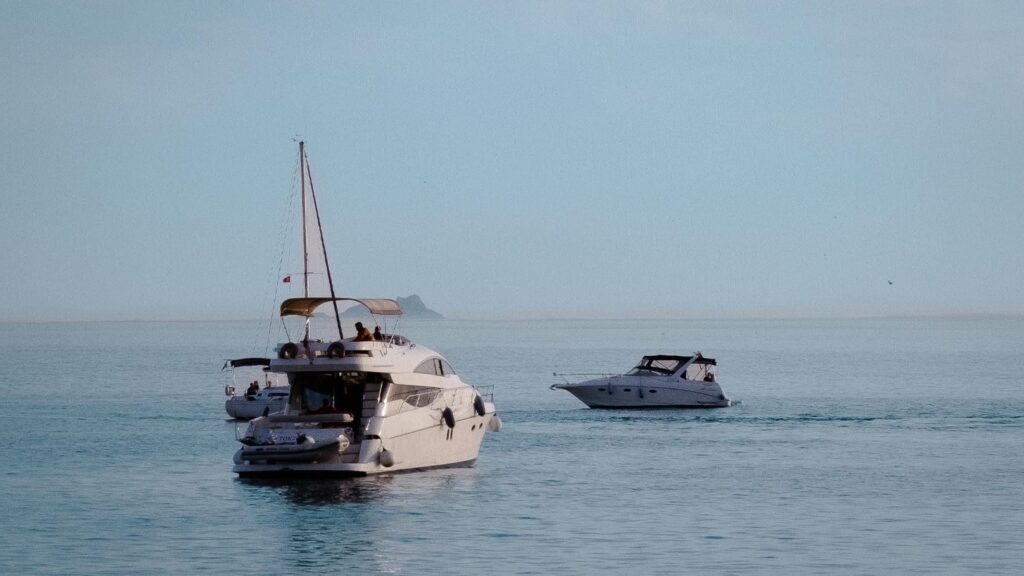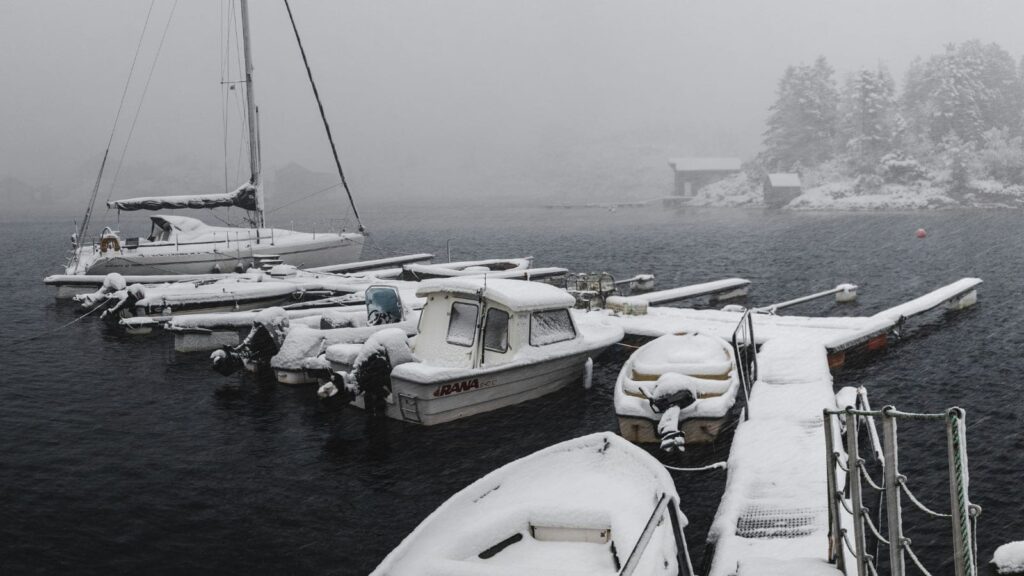Maneuvering in Confined Spaces
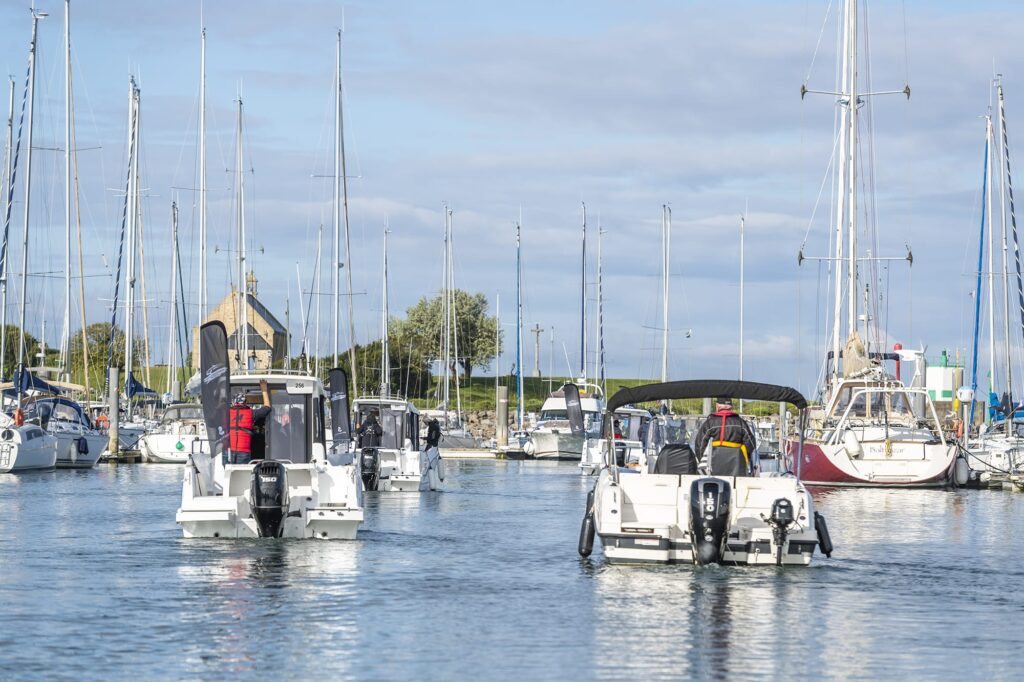
A free preview from our upcoming Advanced Powerboating textbook
Often called “close quarter” maneuvering, the ability to confidently control your boat in confined spaces is a skill cruising boaters must acquire.
One of the most common maneuvers is the so-called “standing turn,” in which you make the boat turn 180 degrees in not much more space than the length of your boat.
In all cases, you will want to approach the area at which you need to turn slowly so that you can come to a stop easily and in control by use of a moderate amount of reverse thrust.
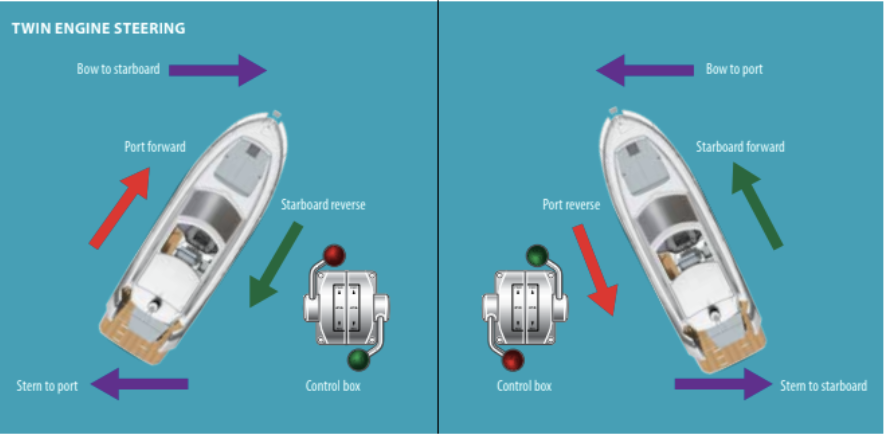
180-Degree Turn in Multi-Engine Boats
To turn a multi-engine boat in place, start by placing one engine (or set of engines) in Forward gear and the other engine in Reverse gear. Do not apply throttle. Just allowing the engines to idle in opposite gears is often enough to get the boat to spin.
If you want the bow to go to starboard, place the starboard engine in Reverse and the port engine in
Forward. If you want the bow to go to port, place the port engine in Reverse and the starboard engine in Forward.
Looking all around you as the boat spins, you may take the engines back to Neutral as the boat’s momentum carries it around. Once you are facing the desired direction, shift both engines into Forward gear and proceed slowly.
180-Degree Turn in Single Engine Boats
Turning a single-engine boat requires more technique. This is especially true if the boat is powered by a single inboard. If that is the case, start as you did with the multi-engine boat previously, with a controlled stop at the desired spot.
A boat powered by a single inboard steers (mostly) by the stream from the propeller pushing against the rudder. This is intuitive when moving forward.
When in Reverse, another phenomenon takes over. You will want to know which way your boat’s engine “kicks” or turns the boat’s stern. Most single engines turn right-handed propellers (turn clockwise in Forward). These tend to kick the stern to port when in Reverse.
To perform a static 180-degree turn in the easiest manner, follow these steps:
- Begin with turning the wheel to starboard and applying a short 1- or 2-second burst of throttle to get the bow moving to starboard. The rotation of the bow will be to starboard throughout the turn.
- Shift back to Neutral.
- Leave the wheel turned to starboard.
- Place the engine in Reverse gear for just a short burst, again just for a second or two.
- As the stern moves to port, the boat rotates further through the 180-degrees.
- Return the control lever to Neutral.
- Recall that your wheel is still turned to starboard.
- Now apply a quick burst of Forward. Repeat the process as needed to complete the turn.
You will get through most 180-degree close quarter turns in fits and starts rather than one smooth motion (although that can be accomplished). Once the boat is facing the desired direction, center the helm, then place the engine in gear and proceed. Note that the standing turn for a right-handed prop must be rotation of the bow to starboard and that the wheel remains to starboard throughout the turn.
Download the Full Excerpt [PDF]
To learn more about holding the boat in position, steering with minimal power, and managing currents, download the PDF!

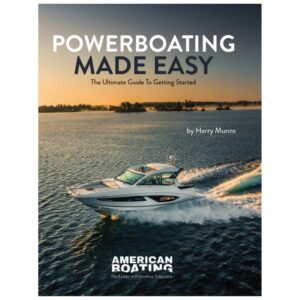 Powerboating Made Easy
Powerboating Made Easy 
